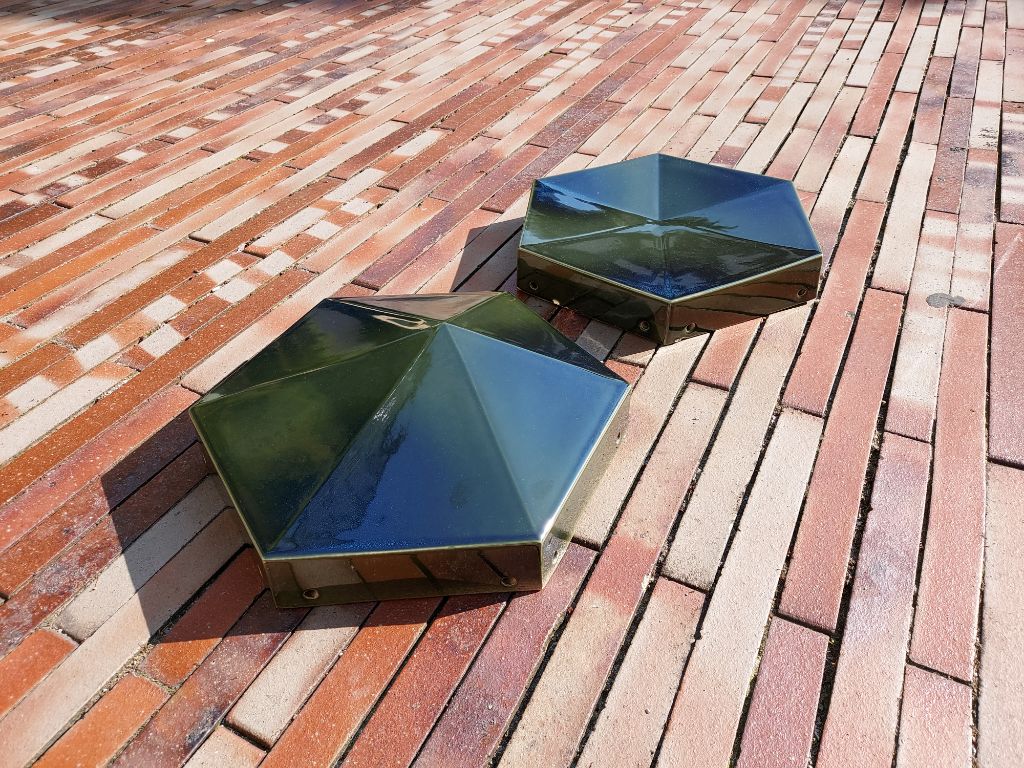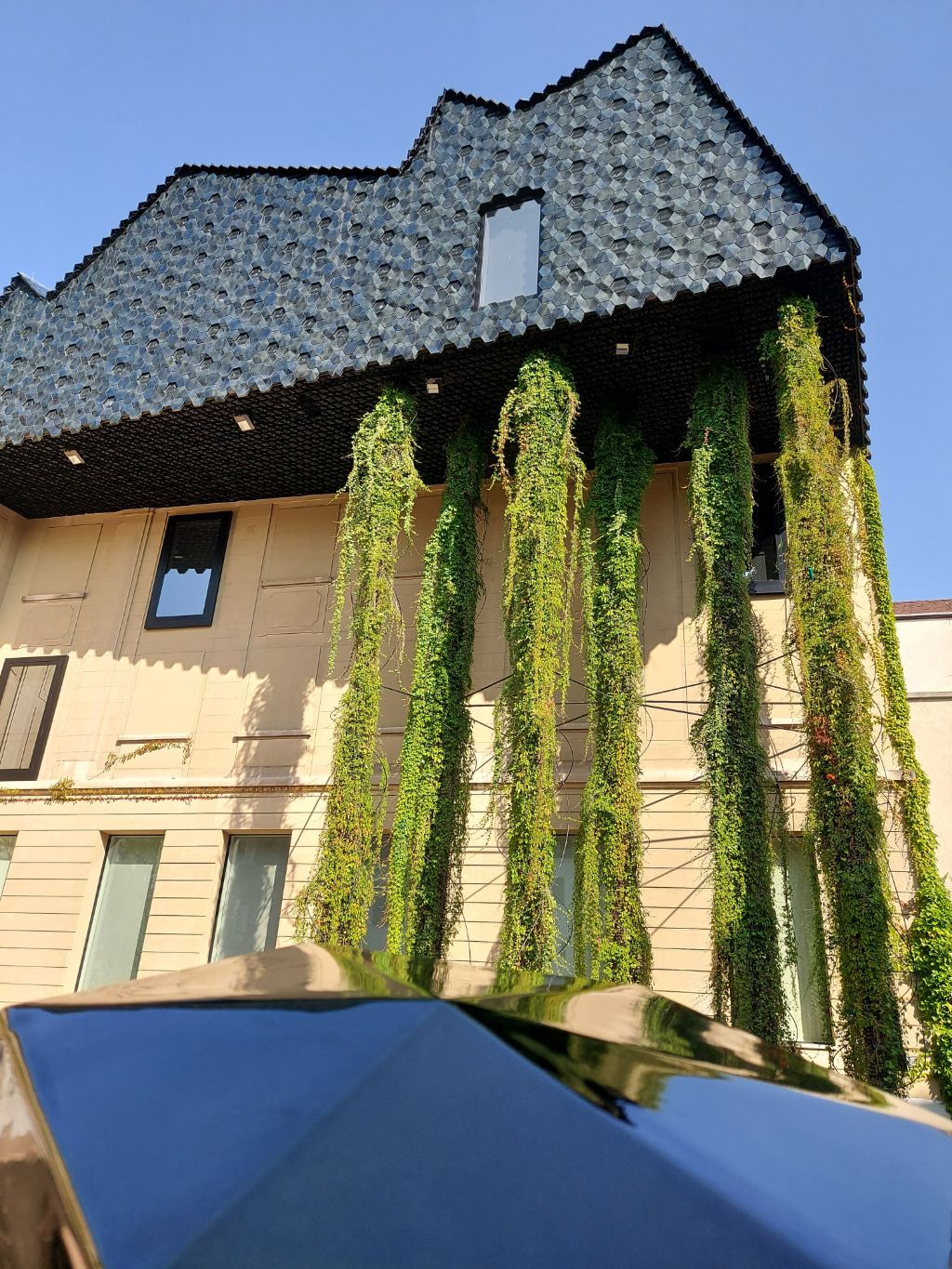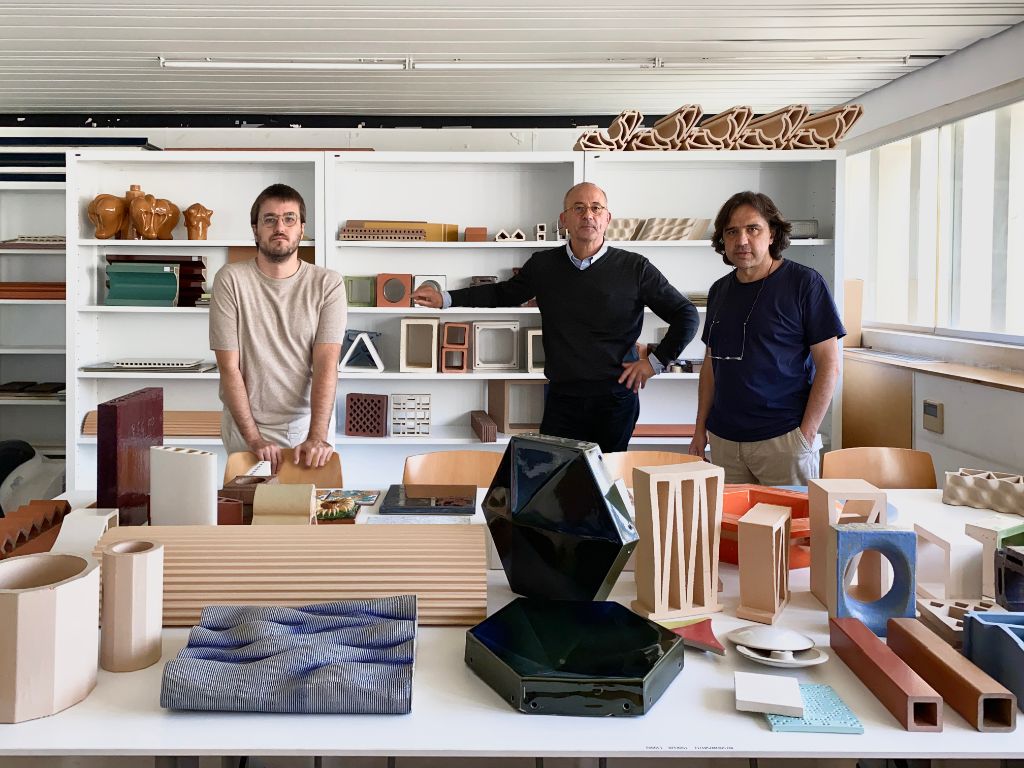Ziegel faszinieren Architekten
Zwei Ziegel unseres Dachs wurden kürzlich nach Spanien verfrachtet. Eduardo De Miguel, Professor des Valencia Ceramic Tile Studies Department erzählt, warum sie dort erforscht und ausgestellt werden.

Die beiden Ziegel vor ihrer Abreise nach Spanien in unserem Hof

Ein letzter Blick hoch zu den Ziegelkollegen
Museum der Kulturen Basel: Professor De Miguel, why are you interested in our tiles?
Eduardo De Miguel: Our interest in the ceramic pieces designed by architects Herzog & de Meuron for the roof of the Museum of Culture in Basel lies in the fact that they proposed an innovative way of working with this material. The idea of moving from the traditional roof tile to a three-dimensional hexagonal piece, glazed in a dark green colour reflecting the medieval roof landscape in which the building is located, was a clear sign of renewal in the heart of the neighborhood.

The research team: Javier Durán, Research Assistant (l.), Eduardo De Miguel (m.), Professor of Architecture Design and Director of the Valencia Ceramic Tile Studies Department, and Enrique Fernández-Vivancos, Senior Lecturer in Architecture Design
What are you going to do with them?
The two ceramic pieces will become part of the collection that the Valencia Ceramic Tile Studies Department has in the School of Architecture at the Universitat Politècnica de València. In addition, as part of the research work, we will develop specific information on the ceramic element, including its redrawing, a placement pattern with animated gifs, a digital model – downloadable files for 3D printing – and its photographic record.
Showing off the three-dimensional hexagonal character
One of the best materials for reprocessing
You have a Department for Ceramic Tile Studies. What is so special about ceramic tiles?
For us architects, ceramics have a special component. Ceramic’s original soft nature, which is hardened in subsequent processes, is one of its most attractive qualities, as its technical and formal features can all be manipulated. This distinctive feature makes it one of the best materials for reprocessing, which explains the current interest shown in it by many professionals.
Further, the need for innovating architecture able to meet current social, economic and environmental challenges has opened a new phase, where associating the latest technology to processes inherited from tradition is key.
Since its creation, the activities we have been carrying out aim to promote new ways of innovating, developing and disseminating ceramic materials by carrying out teacher training programs, research and the transfer of knowledge to the production sector.

Our tiles among other collected tiles
You share your knowledge also online …
The Ceramic Library is an initiative linked to the international digital platform Ceramic Architectures, whose aim is to collect and preserve pieces of architectural works where ceramics are used as a main material in the design. The website edited by the Valencia Ceramic Tile Studies Department, is a dynamic channel of knowledge transfer between the academic, the productive and professional sectors to provide a solid basis of knowledge about the ceramics products used in architecture. In brief, the goals of Ceramic Architectures is disseminating innovations, both in design and manufacturing processes.